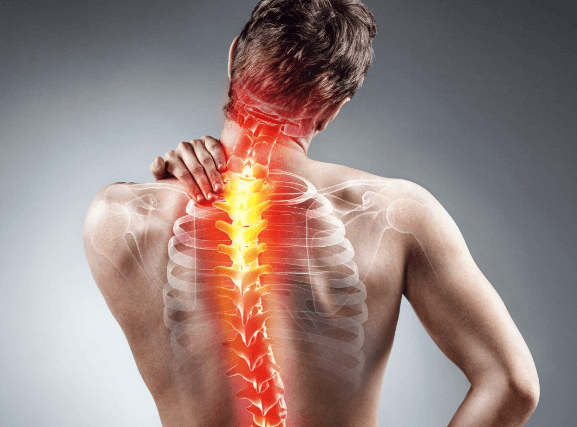What You Need to Know About Whiplash: Spotting Nerve Damage Symptoms

Whiplash is a term that often conjures images of car accidents and neck pain, but there’s much more to it than meets the eye. One of the most concerning aspects of whiplash is the potential for nerve damage, which can lead to a range of debilitating symptoms. In this blog, we’ll explore whiplash nerve damage symptoms, how to spot them, and what steps you can take to ensure your health and recovery.
Understanding Whiplash
Whiplash occurs when the head is suddenly jerked forward and then backward, often due to a rear-end collision. This sudden motion can put stress on the muscles, tendons, and ligaments in the neck. While many people recover from whiplash in a few weeks, others may experience long-term complications, including nerve damage.
Common Symptoms of Whiplash
The most common symptoms of whiplash include:
- Neck Pain and Stiffness: This is the hallmark symptom of whiplash. You may experience difficulty turning your head or pain when trying to do so.
- Headaches: Often starting at the base of the skull, these headaches can radiate toward the forehead.
- Fatigue: Many individuals feel unusually tired after a whiplash injury.
- Dizziness: Some may experience feelings of dizziness or lightheadedness.
While these symptoms are well-known, whiplash nerve damage symptoms can be more insidious and require careful attention.
See also: How a Rape Defense Lawyer Can Protect Your Rights in Complex Cases
Spotting Nerve Damage Symptoms
If you’ve experienced a whiplash injury, it’s crucial to be aware of the signs of nerve damage. Here are some important signs to be aware of:
1. Radiating Pain
Nerve damage can cause pain that radiates from your neck down into your shoulders, arms, or even hands. This type of pain is often described as a shooting or burning sensation. If you experience radiating pain, it may indicate that nerves in your neck are affected.
2. Numbness and Tingling
Another significant symptom of whiplash nerve damage is numbness or tingling sensations in your extremities. This can occur in your arms, hands, or fingers and can feel like “pins and needles.” If these sensations persist, it’s essential to consult a medical professional.
3. Weakness in the Arms or Hands
Nerve damage can result in muscle weakness, making it difficult to grip objects or perform daily tasks. If you find that your hand strength is diminishing or that you’re dropping things more often than usual, it may be a sign of nerve involvement.
4. Loss of Reflexes
You might notice that your reflexes are slower than usual or that you have difficulty responding to stimuli. This can be another indicator of nerve damage resulting from whiplash.
5. Difficulty with Coordination
Some individuals experience coordination issues, leading to clumsiness or trouble with balance. This can be particularly concerning if you find yourself frequently tripping or losing your balance.
6. Changes in Sensation
In addition to numbness and tingling, you might notice changes in how you perceive temperature or touch. For instance, you may become overly sensitive to certain sensations or, conversely, not feel things as acutely as before.
Why You Should Seek Medical Attention
If you’re experiencing any of the symptoms listed above, it’s essential to seek medical attention promptly. A healthcare professional can conduct a thorough examination and determine whether you are experiencing whiplash nerve damage symptoms. Early diagnosis can significantly impact your recovery, helping to prevent further complications.
Diagnostic Procedures
Doctors may employ various diagnostic tools to assess nerve damage, including:
- MRI or CT Scans: These imaging techniques help visualize any structural damage to the neck and surrounding areas.
- Nerve Conduction Studies: This test measures how quickly electrical signals move through your nerves, helping to identify any issues.
- Electromyography (EMG): This procedure evaluates the electrical activity of your muscles, helping to pinpoint nerve-related problems.
Treatment Options
The treatment for whiplash and associated nerve damage symptoms varies depending on the severity of the injury. Common approaches include:
1. Physical Therapy
Physical therapy can be incredibly beneficial for recovery. A trained therapist will work with you to strengthen your neck muscles, improve flexibility, and enhance your overall range of motion.
2. Medications
Over-the-counter pain medications such as ibuprofen or acetaminophen can be effective for alleviating pain and reducing inflammation. In certain situations, physicians might recommend more potent prescriptions or muscle relaxants for relief.
3. Chiropractic Care
Chiropractic adjustments can help realign the spine and alleviate some of the pressure on affected nerves, promoting better function.
4. Surgery
In rare cases, surgery may be necessary to address significant nerve damage or structural problems in the neck.
Conclusion
Whiplash can have lasting effects, particularly when nerve damage is involved. Recognizing whiplash nerve damage symptoms early can make a significant difference in your recovery journey. If you’ve recently experienced a whiplash injury and notice any concerning symptoms, don’t hesitate to reach out to a healthcare professional. At The Jones Firm, we understand the complexities of whiplash injuries and are here to support you through the legal and medical challenges that may arise. Your well-being and health are our foremost concerns. If you have questions about your rights or the steps you need to take after a whiplash injury, contact us today. Together, we can create a journey toward your recovery and health.






